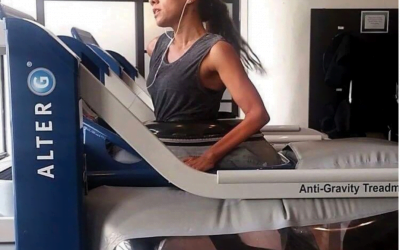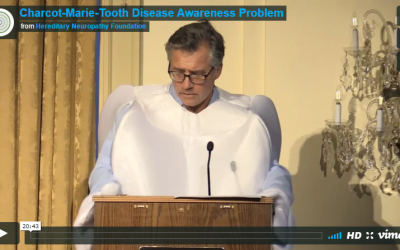Two recent publications from Pharnext describe a novel synergistic combination of 3 drugs (baclofen, naltrexone and sorbitol) and its effect on CMT1A both in the lab and in a phase II clinical trial. These 3 drugs already approved but for unrelated conditions, are combined at new optimal lower doses and under a new formulation. This novel potential therapeutic is called PXT-3003.
In preclinical studies, PXT-3003 was shown in vitro to synergistically increase myelination of axons cocultured with CMT1A rat Schwann cells. The combination of drugs was also shown to lower PMP22 expression (which at high levels in CMT1A is responsible for dysmyelination and consequently axonal loss and muscle atrophy). In the rat model of CMT1A different measures of effectiveness suggested that PXT-3003 was also promising and likely efficacious. The very low doses of all three components would also negate any adverse side effects.
The phase II clinical trial used three dose levels of PXT-3003 in 80 adults with mild to moderate CMT1A. The trial confirmed the safety of the combination drug and the best improvement was seen at the highest dose. PXT-3003 was safe and well tolerated. PXT-3003 showed, beyond stabilization, a significant improvement in the Overall Neuropathy Limitation Scale (ONLS) versus the placebo group. ONLS is a major scale to evaluate disability of upper and lower limbs for peripheral neuropathy. This represents the most promising potential treatment to date after ascorbic acid (vitamin C) failed to demonstrate efficacy for CMT1A in various clinical trials.
There are still gaps in understanding the mechanism of how PXT-3003 actually exerts its effect. It is hoped that by looking at patients over a longer period and possibly treating them earlier before the disease clinically affects them, this may improve nerve conduction and potentially halt and reverse disease. PXT-3003 represents a new hope for CMT1A patients in years, but there is still a long way to go (several years) before it may be more widely available as an FDA and EMA approved treatment for CMT1A.
An International Phase 3 trial will enroll later this year both in the US and Europe.
If you are interested in participating in the clinical trial, join the Global Registry for Inherited Neuropathies (GRIN).







Will children or teens be eligible for the phase 3 trial? My 14 (15 by 05/29) year old daughter has CMT1a. Recent EMG / nerve conduction present as “severe”. We live in N. Georgia and currently travel to S.R. CHOA in Atlanta for Ortho and Neuro Dr’s.
Please sign me up for the newsletter. I have CMT and am interested in getting information. Thanks.
Thanks Brady! You are all signed up for our newsletters.